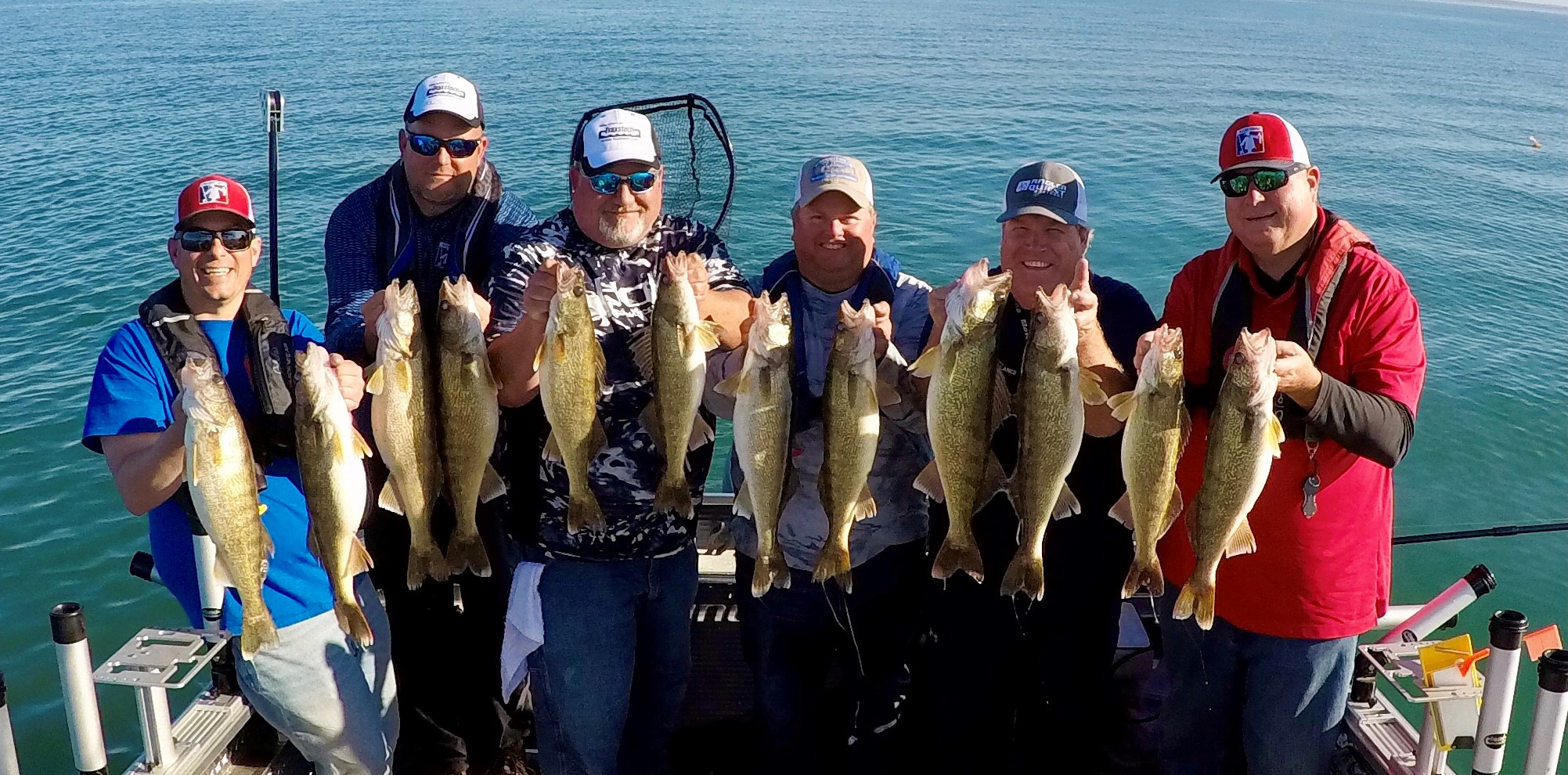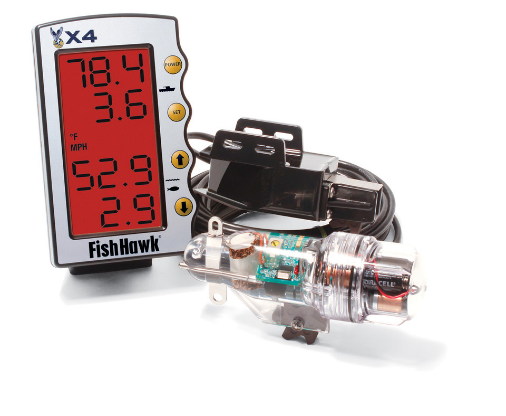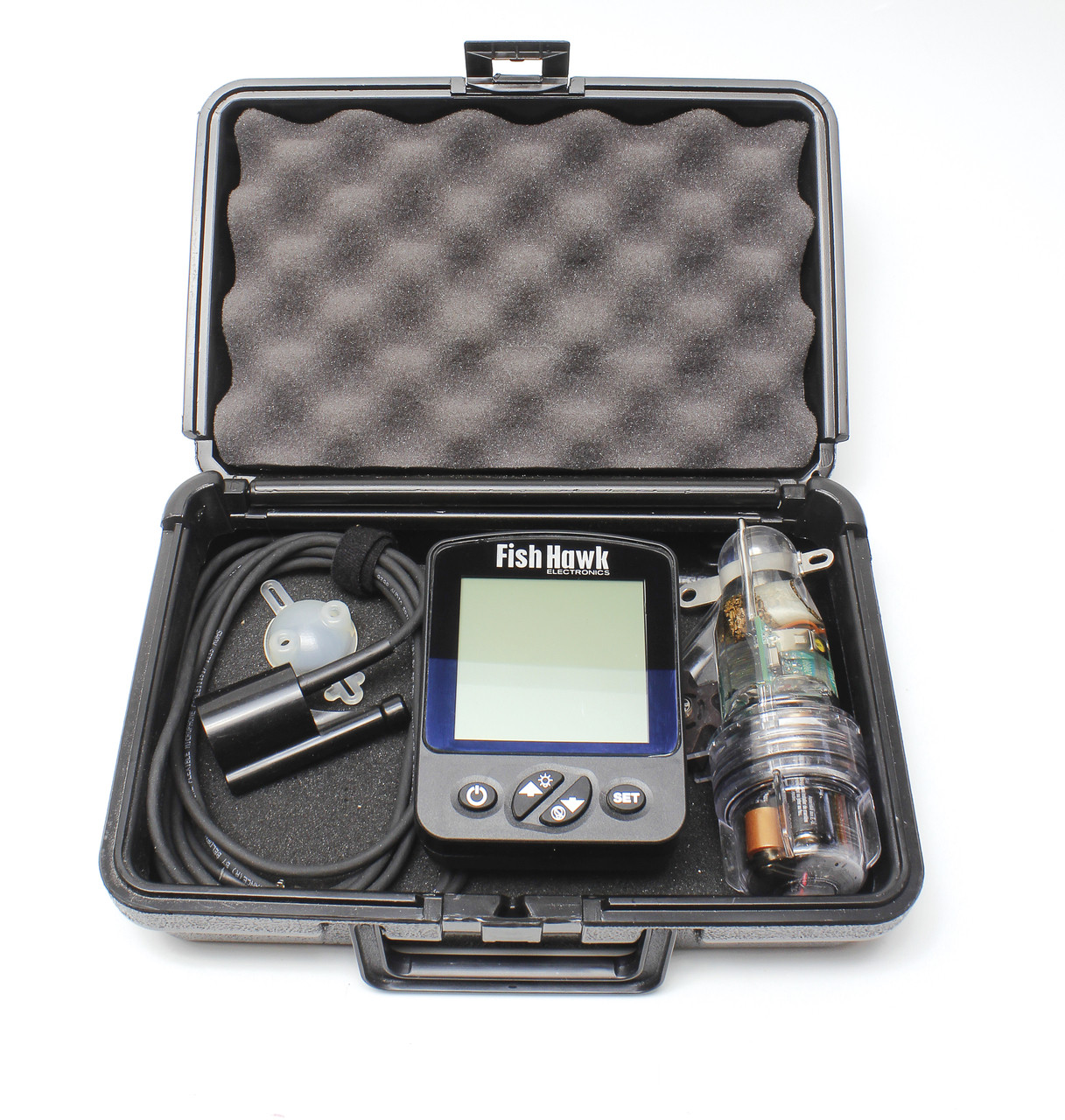Stay “Current” for Walleye
By Lance Valentine
The looks were all the same; 7 people wondering what the heck just happened. After a 25-minute trolling pass with 11 fish caught, we were halfway through our return pass and had nothing, zip, zero. Everything was the same. Our speed, depth, lures. The fish were still on the sonar, but nothing. We get to where we had started, get the Angler Qwest turned around and almost instantly, “Wham”, a planer board goes back, and we are on our way to another great pass. If this sounds familiar to you, you’re probably missing the one factor we weren’t paying attention to; sub-surface currents.

Now, this above experience is one of two that absolutely convinced me that paying attention to sub-surface currents ALL THE TIME, is critical to success. Once we made our third pass and started catching fish again immediately, I grabbed my Fish Hawk and noticed there was a sub-surface current running one direction at about 0.75 mph. Now, that’s not unusual but we were fishing 6-7 feet down in only 11 feet of water! That day I realized current can influence fishing success at any time, in any depth.
Effects of Sub-Surface Currents
Sub-surface currents are something that “big” water anglers think about, but something that has been on the mind of walleye anglers for only a short amount of time. Open water walleye trollers have paid attention to it for a while, but the average walleye angler has mostly ignored it. Before we discuss how to measure sub-surface currents, let’s discuss why it is so important.
Let’s start with sub-surface current and lure action. While we think about current in “speed”, it has more of an effect on lure action. For our example we will use a SOG on the GPS of 2.0 mph and be trolling an unweighted crankbait. As we pull our crankbait through the water it has an “action” which is created by water pressure on the lure, and in our example, it is a 2-mph action. Now, if we troll that same crankbait at the same 2.0 MPH SOG on our GPS but we have a 0.5 mph current that we are trolling with, the current will “push” the crankbait forward and decrease the action. As we turn around and troll into that same 0.5 mph current, the force on the crankbait is increased to 2.5 mph, the 2.0 we are traveling AND the additional 0.5 mph from the current. Same crankbait, same SOG on our GPS, same Depth but two completely actions, that are 1.0 mph apart! Think that may affect how our crankbait looks to a fish?
Lure depth is also affected by sub-surface currents. Let’s take the same factors above and troll a crawler harness with an inline or snap weight added. With no current, trolling at 2.0 mph SOG, or harness will reach a certain depth. Keep everything the same and troll with a sub-surface current our harness will run DEEPER since the force on the weight is less, letting it drop deeper. Troll into our 0.5 mph sub-surface current and our harness will run SHALLOWER, since there is more water pressure forcing the weight “up” in the water column. Starting to see how and why we can catch fish trolling one direction, do everything EXACTLY the same and catch nothing going the other way? It probably isn’t an issue of direction, but more of what trolling direction does to the action and depth or our lures trolling one direction or another.
Measuring Sub-Surface Currents
 How can an angler determine which direction and how fast sub-surface currents are present? There are several ways to do this, some use modern technology and one is cheap and easy!
How can an angler determine which direction and how fast sub-surface currents are present? There are several ways to do this, some use modern technology and one is cheap and easy!
For a simple measurement of sub-surface currents an underwater probe/transducer/display system is a favorite choice. Fish Hawk Electronics has been a leader in this technology for a few decades now and is a common, simple option. A probe is lowered in the water that measures and transmits probe speed, water temperature and often probe depth. The probe is lowered into the water, usually on a downrigger and transmits information back to a transducer mounted on the transom of the boat that is hard wired into a console mounted display. While this has been the standard for measuring trolling speed “at the probe” it is not a great system for the traveling angler, the angler who fishes from multiple boats or the angler that wants to have the information a Fish Hawk provides but doesn’t want a “hard” mounted system.

A few years ago, Fish Hawk introduced the X2 system. A portable probe, transducer (Slip-Ducer), display system that is extremely portable, accurate and battery operated. The probe can be lowered on a downrigger, but is more commonly used on a short, stiff fishing rod and reel loaded with 40-60lb braided line and weighted with a 1-3lb lead ball. Since the transducer attaches and slides down the fishing line, there is no need for a permanently mounted transducer. The transducer cable plugs into the back of the display, reads the signal from the transducer and gives the angler probe speed (current direction) and water temperature at the probe. This is the system I use on my boats and because it is to portable and easy to use, I have taken it with me when I have fished on the boat of several fishing buddies.

If you are looking for a more detailed look at current speed and depth of individual lures, than a Smart-Troll system may fit your needs better. The Smart-Troll uses individual probes about size of a pinkie finger, and a permanent mounted transducer. A probe is attached on individual lines (up to 6) and is identified by color (red, blue, white etc.) Each probe can measure and transmit depth, temperature and speed. The information can be viewed on a phone or tablet and lets an angler see how each individual lure is being affected by sub-surface currents.
Fishermen have always been an ingenious group and one of those anglers was the first to show me a VERY inexpensive, easy and accurate way to determine sub-surface currents and lure speed. This PWT Pro simply attached a 3 oz weight to an extra trolling rod, sent it down in the water column to where his baits were running and stuck it in a rod holder. When he caught a fish, he simply noted the “angle of the dangle”. As he trolled different directions, he would change boat speed to duplicate the productive “dangle angle”, thereby getting the same “speed” on his lures no matter which way he would troll…..it worked!!
A Lesson Learned
The experience at the start of this article was one that had a profound effect on my trolling, as did another experience later that same year. I was trolling with a group of buddies on Lake Erie in November after one of our Teachin Fishin Fishing Education Weekends. We were trolling over 50-51 feet of water and fishing down 18-24 feet with our crankbaits. We had the Fish Hawk X2 down on a Traxstech downrigger and kept an eye on it. We quickly noticed that a probe speed of 1.7-1.8 was our most productive. Now, this day was a unicorn. November on Lake Erie, fishing in jeans and short sleeved shirts, NO wind, NO waves; a beautiful late June day happening in November! I set the Autopilot on a productive path from the few days before and off we went, trolling almost 8 miles that day. Since there was no discernable wind or waves, I set the Troll Mode on my Suzuki for the proper RPMs and started trolling. Our fish started coming regular, but they came in “bunches”, 4 or 5 at a time then 15-20 minutes with nothing.
After that happened the third time, I checked the Fish Hawk display that I had been ignoring since we were catching fish and there was no waves and no wind. Well, when we caught fish our probe read 1.7-1.8 and when we caught nothing the probe speed was faster or slower. So, trolling in a completely straight line (I NEVER adjusted the Autopilot all day), with no wind, or waves, we encountered several different current speeds and directions. After noticing what was happening, I worked hard to keep the probe speed at the productive 1.7-1.8 mph range. Over the course or our 8 miles we caught close to 40 walleye and the SOG reading on the GPS ranged from 0.9 to 3.2 to keep the probe speed in the right range, a lesson learned that currents are NOT linear, consistent or even predictable!
Sub-surface currents have an effect on our fishing almost every day, in all conditions and at all depths. Understand that they exist, have a way to measure them and adjust to keep your lures running “right” and your livewell will get fuller, faster almost every trip!
For more information:
Fish Hawk www.fishhawkelectronics.com
Smart-Troll www.smarttroll.com
Fishing Education Weekends www.teachinfishin.com